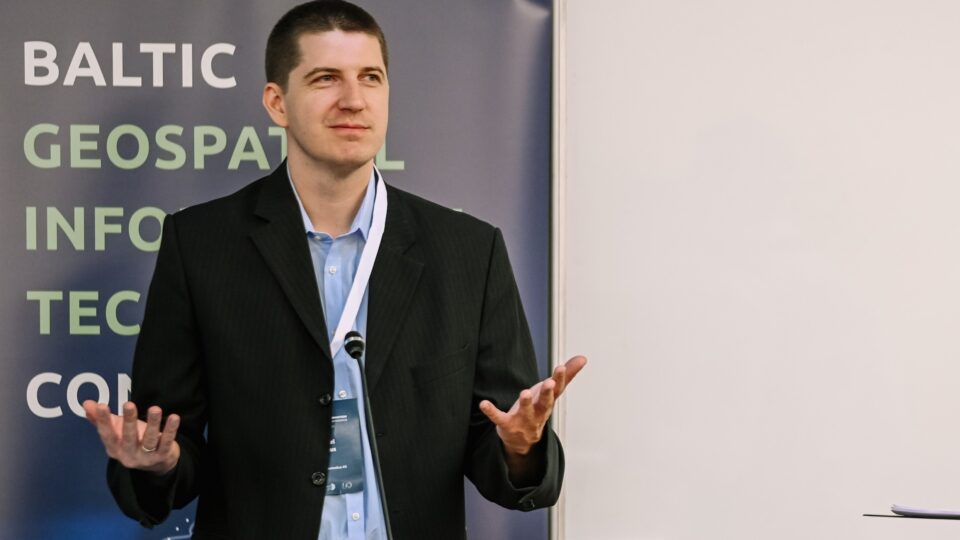Can economic growth be decoupled from environmental impact?
This question has been a part of economic and innovation policy debates for the past 50 years – though at times, we seem to have largely forgotten it. When the Club of Rome published its Limits to Growth report in 1972 – raising critical concerns about the feasibility of exponential growth on a planet with finite resources – researchers from the University of Sussex, then at the heart of innovation studies, issued their response a year later. While mainly critiquing the report’s methodology, they also offered a more optimistic view of the role of technology, innovation and industry in society and the economy.
The original debate was followed by 40–50 years of near-unquestioned belief in innovation and technology. But in the past decade, post-growth and degrowth schools have increasingly challenged this faith with a simple but fundamental question: you’ve promised since the 1970s that economic growth and environmental impact can be decoupled – so where are the results? If we look at Our World in Data charts on the relationship between CO₂ emissions and GDP growth, we do find examples of some mainly developed and relatively innovative countries where partial decoupling has been achieved over the past 20 years (including Estonia). Yet critics point out that this progress is clearly not fast enough, and globally, our material footprint – how much nature is consumed to sustain economic growth – has continued to grow faster than population or GDP, especially in the wealthier parts of the world.
Despite these critical and often unresolved questions, much of the global elite remains firmly committed to belief in technology and innovation – both in academia, where the latest model of “transformative innovation policy” has been developed, and in policy practice, where the focus is increasingly on solving climate and sustainability challenges through innovation and technology. For example, Estonia’s Green Transition vision, its broader economic and innovation policies, as well as TalTech’s recent Green Transition strategy, have all clearly set out to decouple economic growth from environmental harm by leveraging technology and innovation. Yet it remains unclear whether we actually have a new vision of how to develop and govern technology and innovation – especially given that the promises and expectations of the past 50 years have largely gone unfulfilled.
The following provides a brief overview of the evolution of innovation policy models over the last 50–60 years – to understand the origins, strengths and weaknesses of current approaches and to reflect on what more might be needed to make innovation and technology work better for the planet.
Three approaches to innovation policy
Put simply, over the past 50–60 years, scientific thinking on innovation policy has evolved through three major stages. These stages have made the approaches more complex and ambitious, while the expectations for policy – and how to measure its success – have become more blurred and fragmented.
The most classical model, based on market failures, viewed technology and innovation narrowly through the lens of economic growth and development. In this model, technology and innovation are primarily driven by companies, and the state’s role is to remove market failures that hinder knowledge creation – for example, by supporting basic research, regulating intellectual property, and offering fiscal incentives such as tax breaks for applied research.
From the 1980s onward, a new approach began spreading globally – especially across OECD countries – known as the innovation systems model. It recognised that most technologies and innovations do not emerge from individual firms or lone inventors, but from innovation ecosystems – collaborative environments where public and private sector organisations with different capabilities co-create solutions. Importantly, innovation is defined here not just as the creation of new solutions but also their successful application in real life. In this model, the state’s role expands beyond fixing market failures – it must also orchestrate the ecosystem to ensure that domestic collaboration is dynamic and internationally competitive, based on trust and joint effort.

Since around the 1980s, the innovation systems approach began to spread globally. Image is illustrative | Photo: Getty Images/Unsplash.
Since the mid-2000s, both academic and practical discussions have increasingly recognised that innovation models focused narrowly on economic growth are no longer sufficient.
It has become evident that complex societal challenges – from population ageing to the climate and sustainability crises – must also be brought to the centre of innovation and technology agendas. What makes these domains particularly challenging is the wicked nature of the problems (we often don’t even fully understand them), the maturity of development environments (many entrenched interests and expectations are in play), and a high level of uncertainty about what solutions will actually work. As a result, companies operating in these fields tend to avoid risk and offer only incremental improvements.
For these reasons, both theory and practice have emphasised that in the era of transformative innovation policy, governments must play a more proactive role in steering innovation. The most popular approach to this idea – both in concept and implementation – is the mission-oriented innovation policy framework, popularised by Mariana Mazzucato. It has now been tested and applied in dozens of countries worldwide and stands as one of the core strategies of the European Union’s current research and innovation policy.
Yet behind this relatively straightforward historical evolution of innovation policy lies a set of unresolved challenges. While conceptually, innovation policy has advanced considerably, its practical implementation has often relied on governance mechanisms left over from the earlier era of market-failure-based models. In other words, regardless of the increasing complexity of our problems and goals, many states continue to favour narrow, market-based or bureaucratic interventions over dynamic public–private collaboration. These policies attempt to manage growing uncertainty using rigid long-term strategies, regulations and output-based targets – reducing complex challenges to oversimplified categories and steering markets and innovation ecosystems towards paths that are unlikely to generate meaningful solutions.
Furthermore, the era of transformative innovation policy has exposed a deeper, previously overlooked tension: most conceptual and rhetorical frameworks argue that we should deploy technology and innovation to solve grand societal challenges – with economic growth being a welcomed side effect of solving global problems. But in practice, because responsibility for addressing societal challenges and managing science and innovation is often split between different ministries or agencies, governance tends to prioritise one goal over the other. And when conflicts arise, growth-oriented objectives still tend to win out. As early as the 1970s, Richard Nelson described this unresolved issue as the “moon and the ghetto” paradox – in other words, our systems are better at sending a person to the Moon than solving deeply rooted social or environmental problems.
This highlights an essential difference: while traditional, market-failure-based innovation policy was largely neutral and technocratic, mission-oriented and transformative innovation policy is inherently political. Such an approach requires mechanisms that can help navigate trade-offs and make the right compromises. And there are plenty of trade-offs – between countries (those that have exhausted their carbon budgets vs. those that haven’t), between generations (how much of our children’s future we are willing to spend on today’s growth – or vice versa), and between sectors (which ones need to be phased out, and where new resources should be directed).
One of the most common criticisms of transformative innovation policy is that, although it defines novel ways to intervene in driving and implementing large-scale systemic change – for example, the Great Transition approach developed with the involvement of Estonian researchers provides a more systemic perspective – it does not sufficiently distinguish between technocratic/neutral interventions and fundamentally political ones. While new green innovation niches can often be supported using existing policymaking tools, destabilising or even shutting down legacy sectors is a far more serious and political task that requires an explicitly political innovation policy approach. Today, however, rather than including political choice and compromise in innovation governance, we often turn to seemingly apolitical solutions such as experimentation, co-creation, or design thinking – strategies that simply obscure the need for real political decision-making behind a new cloud of buzzwords.
In short, looking back to the debates of the 1970s and the developments since, it is clear that in addition to rethinking the role of innovation and the state, we also need to rethink how innovation processes are governed.

As early as the 1970s, Richard Nelson articulated the still-unresolved Moon and the ghetto paradox: at the end of the day, we are better at solving complex technological challenges (like sending a person to the Moon) than we are at addressing complex social and, today, climate and environmental crises | Photo: Getty Images/Unsplash.
The climate crisis and innovation
In the context of the relationship between the climate and sustainability crises and innovation, several key shortcomings of current innovation frameworks come into sharper focus. Most national innovation policies still centre around technology – and especially high technology – driven by the assumption that big, complex problems require big, complex science and technological solutions. Yet beyond the classical innovation policy discourse, we can see that various aspects of the climate and sustainability crises may call for entirely different types of solutions: institutional (regulatory, fiscal) and social (behavioural, cultural) innovations, or nature-based solutions, which are often more effective than high-tech approaches.
As a result, the mainstream discourse of innovation policy has increasingly begun to explore how to integrate these alternative approaches into technology-dominated paradigms. But this debate has yet to fully play out in today’s economic and innovation policy spheres, because it would require a redefinition of both the core concept of innovation and the criteria by which its success is measured. For example, a few years ago, the OECD introduced an umbrella definition of innovation, replacing the word “firm” with “unit” – to acknowledge that “useful” or value-creating innovation can also emerge outside of traditional markets and businesses. Until now, innovation in the public and social sectors has often existed on the margins of innovation theory – but redefining innovation may be part of a broader shift in the innovation landscape, one that also demands a rethink of what we count as success.
A second important challenge is that the climate and sustainability crises are pushing innovation policy debates onto a more explicitly global stage. These crises remind us that local actions can have global consequences. At the same time, novel innovations intended to address the climate crisis can generate not only local benefits but also global – and often negative – material, environmental and social side effects. In today’s global innovation and production networks, these impacts tend to show up in partial or abstract form – in Excel spreadsheets or ESG reports – rather than in our lived, everyday experience. This has made it easier to ignore such effects, whether as individuals, businesses or governments, and to dismiss them as the exaggerations of climate-conscious activists.
Within the context of the European Green Deal – which is, at its core, also rooted in belief in technology, innovation, and decoupling environmental impact from growth – some elements of global impact are beginning to enter mainstream discussions. These currently focus on how to protect the EU’s internal green transition and key industries from dirtier external competition. But due to growing societal pressure, broader climate responsibility is becoming an increasingly urgent issue. Still, it is important to acknowledge that we are not particularly effective at solving the climate and sustainability crises on a global scale.

In the context of the European Green Deal, some elements of global impact are starting to enter more mainstream discussions | Image: Unsplash.
Experimental governance
In their recent book, Charles Sabel and David Victor argue that, when it comes to seeking global solutions for global problems, we’ve actually become worse – not better – over time. They show how, in the past decades, we have managed to sign either poor (Kyoto Protocol) or slightly less poor (Paris Agreement) international climate deals. This is largely because, while we know how to agree on important goals – like reducing emissions or limiting global warming – we’ve paradoxically become increasingly ineffective at implementing those agreements. The Kyoto Protocol relied heavily on emissions trading, which critics say allowed polluters to buy their way out of responsibility without contributing real solutions. The Paris Agreement, in turn, centres on comparing nationally determined contributions (NDCs) – not actual results – without effectively sharing best practices or disseminating successful approaches. Even the UN’s Sustainable Development Goals framework arguably suffers from the same flaws and could be grouped into this category of “less bad” agreements.
As a more positive example, Sabel and Victor highlight the 1987 Montreal Protocol, which targeted ozone layer depletion by phasing out the use of CFCs and finding alternatives. What made the Montreal Protocol “good” in their view was not just its ambitious goals, but the development of an experimental governance model tailored to a complex problem – one that enabled flexibility, learning, and innovation in reducing harmful emissions. They have also seen similar working solutions in national and regional innovation and climate policies – from California’s efforts to cut transport emissions to tackling agricultural runoff in Ireland.
The experimental governance model is based on one crucial assumption: complex and “wicked” problems are defined by high uncertainty. This means that traditional linear, command-and-control or market-based solutions often fail – because the process involves continuous trial and error, learning from failure, and adjusting goals. The model rests on three interlinked principles that can be adapted to address a range of complex challenges:
-
Experimental organisations – Organisations tackling complex problems should be decentralised, open to change, and rely less on hierarchical or market-based solutions and more on flexible, dynamic governance principles. This might mean replacing rigid laws with more informal agreements or administrative guidance, and embracing a digital-age mindset in which strategy is not a fixed plan on paper but a continuous process of implementation and learning.
-
Spaces for learning and adaptation – Solving complex problems requires continuous mutual learning and a certain pressure to seek out, apply and improve the best available practices. For instance, while EU rankings or study trips are sometimes dismissed as pointless, they can in the long run create useful pressure to improve and avoid falling behind.
-
Motivating interventions – In the context of the climate crisis, “silent sanctions” – such as future bans or legal obligations – have often served as effective motivators for companies, communities or other actors to start searching for new solutions and opportunities. For example, when the EU announced in the 2010s that nearly zero-energy buildings would be mandatory by the end of the decade, there was a lot of resistance due to the lack of technologies, solutions, and business models. But today, no one considers that requirement unrealistic – the technologies have emerged, new sectors have formed, and viable models are in place.
When applied more concretely to innovation policy, this experimental approach shifts the focus away from the much-criticised idea of “picking winners” – in other words, selecting who gets subsidies and regulatory support and then waiting for results. Instead, it offers a chance to focus on collaboration and co-creation with a forward-looking minority who understand the value of transformation and see the potential for growth in it. At the same time, policies for “just transition” – ensuring that those less ready to change can still catch up – must also be implemented in parallel to avoid leaving anyone behind.
Interestingly, Charles Sabel has previously noted that in policy areas where the EU lacks strong leadership mandates, its policy design tends to naturally take the shape of experimental governance. From that perspective, the entire European Green Deal can also be interpreted as an experiment in adaptive governance: evolving goals and ambitions, constant benchmarking and peer learning, and bold regulatory interventions – from renovation targets to food system emissions cuts – that may seem unrealistic to some but inspire opportunity for others.
This experimental governance framework should ideally enable systemic adaptation and learning in response to complex challenges. But it also requires leaving behind many traditional governance dogmas – especially the notion that “what can’t be measured can’t be managed.” In this way, we return to the fundamental political nature of modern innovation policy. Achieving the goals set for technology and innovation – particularly in the context of climate and sustainability – requires a reassessment of the core values that underpin innovation today. That means finding the right balance: between economic growth and societal benefit, between technological, non-technological and nature-based solutions, and between global ambition and the ecological limits of the planet – including how we allocate finite resources across competing priorities.
Meeting the goals set for technology and innovation – at least when it comes to solving climate and sustainability challenges – requires a rethinking and rebalancing of the values at the heart of contemporary innovation.

Meeting the goals set for technology and innovation – particularly in addressing climate and sustainability challenges – requires a reassessment and rebalancing of the core values underlying contemporary innovation | Photo: Daniel van den Berg/Unsplash.
Tasks for the Ministry of Climate
As mentioned earlier, Estonia’s efforts to build a central narrative for its climate and sustainability policies are still heavily growth-focused, rooted in the belief that economic growth and environmental impacts can be decoupled through technology and innovation. But do we have the governance intelligence and capacity to learn from the past 50 years of international experience and do things better?
In the most recent elections, climate and sustainability issues were highly topical, and the establishment of the Ministry of Climate marks an important step in strengthening the institutional capacity to address them. Yet expectations surrounding the climate law still largely rest on the assumption that the future can be written into legislation and locked in – to provide investment certainty for markets. Experience suggests, however, that pretending to offer future certainty, rather than acknowledging uncertainty, rarely leads to good outcomes.
If Estonia wants to tackle the challenges of the green transition in a way that also seeks new opportunities for economic development, the role of the Ministry of Climate should not be to design a fully finished future roadmap for businesses on paper. Instead, it should lead the search for and adoption of new solutions and practices – using the framework of experimental governance described above.
This means the Ministry of Climate should also temper the technocentric beliefs that circulate among colleagues in the education, research and economic ministries, and actively promote alternative forms of innovation – from social to nature-based – while keeping planetary boundaries in focus. History has shown that not every problem requires a high-tech solution – in fact, most climate and sustainability challenges are at least partly the result of high-tech systems – and alternative solutions can often work better. This implies that the core success criterion of future innovation policy should not be economic profit alone, but rather broader societal benefit.
The core success criterion of future innovation policy should not be economic profit alone, but rather broader societal benefit.
This article appeared in a shortened print version in Vikerkaar magazine (no. 7–8, 2023).




